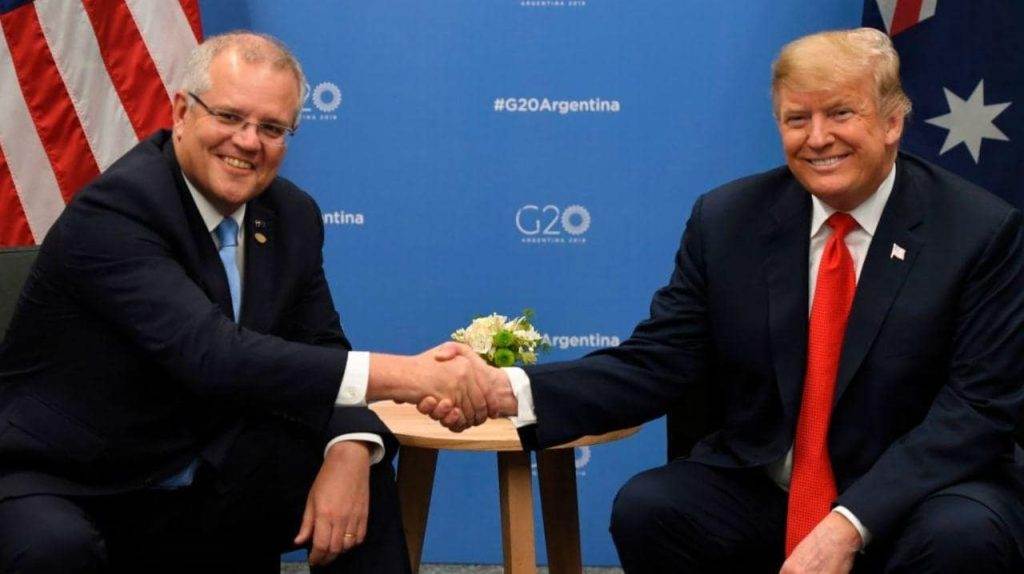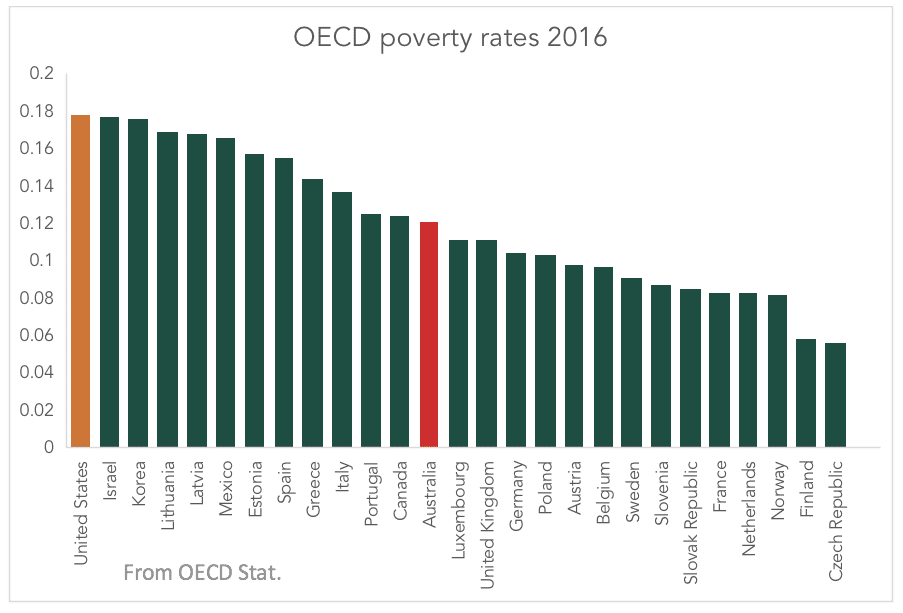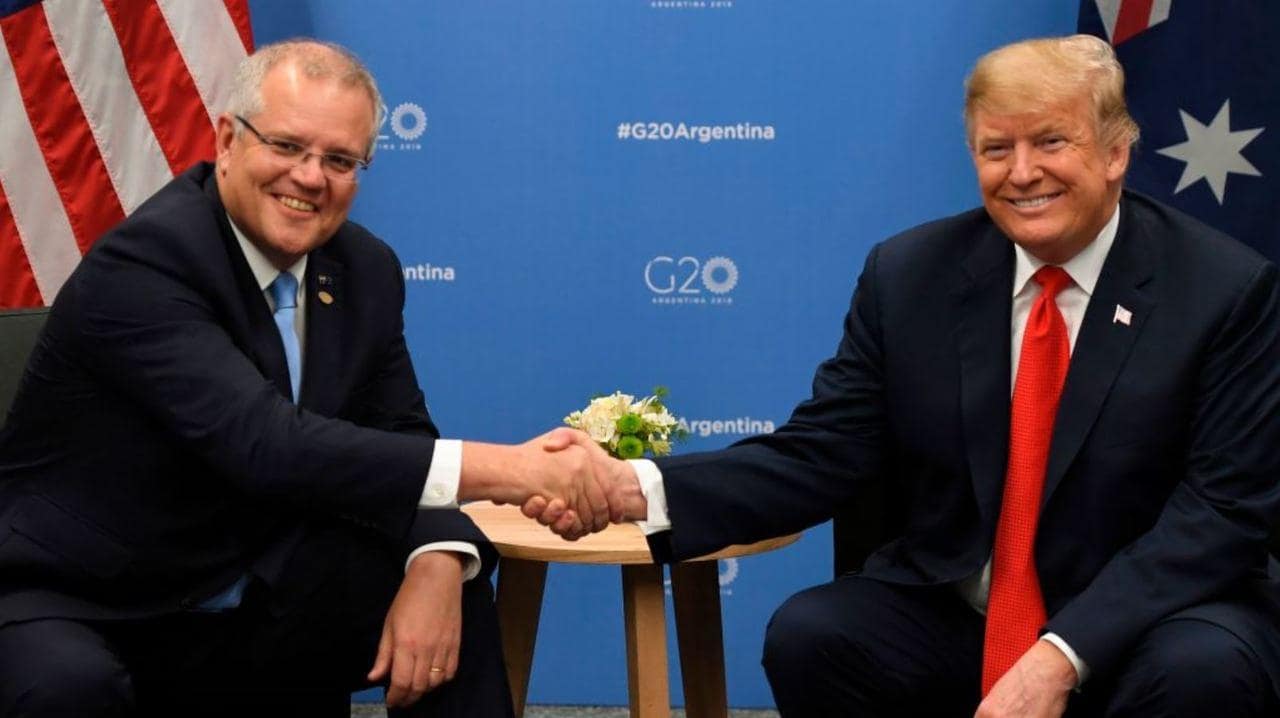
Warwick Smith is our Senior Economist. On twitter he’s @RecoEco.
At the 2019 federal election Australians were offered a starker choice than usual. The differences between the policies and rhetoric of the major parties was greater than it has been for decades.
One way to characterise the two major parties is that the Coalition want to make Australia more like the United States, and Labor want to make us more like the social democracies of northern Europe.
The United States is the most prominent exemplar of Liberal Party values of personal freedom, social conservatism, small government and the primacy of the market. The argument goes that governments are inefficient and the drivers of economic success are entrepreneurs and businesses. Therefore, we should minimise government by cutting services and giving tax cuts to businesses and rich people. This will create the right incentives for businesses to thrive, unemployment to fall and the material standard of living will improve for all. A rising tide lifts all boats. Economists call this supply side economics but more colloquially it’s knows as trickle-down economics.
At the other end of the spectrum in terms of modern industrialised countries, is democratic socialism – which focuses on individuals. The path to prosperity for democratic socialists is high quality universal education, free healthcare for all and a strong social safety net. This model, best implemented by the Nordic countries of northern Europe, assumes that if your population is well educated, healthy, and secure then they will be productive, engaged, resilient and adaptable.
Australia has, historically walked the middle ground between the two with a good, almost universal, healthcare system, a pretty good public education system and a welfare system more generous that the US but far short of the Scandinavians. The Coalition, when in government, tend nudge us towards the US system and Labor, when in government nudge us towards Europe.
At the 2019 federal election the Labor party were proposing to increase taxes (primarily by closing tax loopholes) on high income earners and wealthy people in order to better fund public services, including health and education. The Coalition were proposing to dramatically cut taxes for high income earners, and presumably cut services – though they avoided spelling that out by timing the greatest tax cuts just outside the budget forward estimates.
The Coalition have won, and their policy proposals very clearly take us down the path of the United States.
We don’t have to wonder what it means to head down this path: we can look to the results in the US.
Australia is currently in the middle of the pack of developed countries when it comes to poverty rates. The United States is dead last. Note the Scandinavian countries are all at the opposite end of the chart.

The US spends by far the most per person of any country in the world on its privatised healthcare system with results that are mediocre at best. Infant mortality, death in childbirth and life expectancy are all amongst the worst in the OECD.
High poverty rates, a patchy public education system and low economic mobility (if you’re born poor in the US you’re more likely to stay poor than in most OECD countries) leads to high crime rates. The tough on crime response that tends to go along with economic individualism has led the United States to have the highest proportion of its population in prison in the world.
So, given the US performs so poorly among rich countries on basically every important measure you care to think of, why would anybody want to go down that path? Well, the flipside of low economic mobility is that if you’re rich, the US is a great place to stay rich, get richer and to control politics.
Money in politics is already a big problem in Australia but in the US it’s out of control. Many have been shocked by Clive Palmer spending tens of millions of dollars just to drain votes from Labor and funnel them through preferences to the Coalition but this kind of expenditure is dwarfed by private political expenditure in the US, even when you take into account the size difference between our populations and economies. This is partly why the United States was ranked dead last in the OECD in the University of Glasgow and Nottingham Trent University’s Economic Democracy Index.
The Nordic social democracies, by contrast, have high levels of taxation, large government sectors, very highly rated and effective education systems, generous social safety nets, and universal healthcare. Their levels of inequality are low, social mobility is high, poverty rates are low, crime rates are low, prison populations are small and their material standard of living is very high.
It turns out that if you prioritise the rich, wealth and income doesn’t really trickle down. The rich mostly keep it and use their wealth and power to maintain and increase their wealth and power. It is this use of power by the rich that prevents us having a more just and equal society.
The Per Capita annual tax survey shows every year that the majority of Australians want more money spent on health and education. The Nordic countries of Europe prove that it’s possible to have first rate public services and strong economies. There is no necessary trade-off between greater taxation and economic prosperity. We’re one of the richest countries in the world. If it was a priority we could have world-class education and healthcare systems. The reason we don’t is because those who control the political economic system don’t consider it a high enough priority.
Following the United States down the path of eroded public health and education, eroded democratic institutions, high poverty rates and higher inequality suits only one constituency: the rich. Is that really what the Australian people want? Perhaps we should communicate this choice more clearly at the next federal election.

